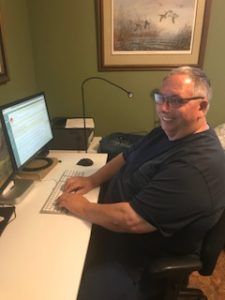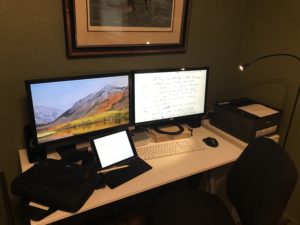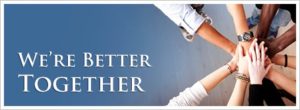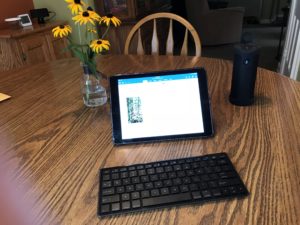
The dare was to ride my bike as fast as possible to the bottom of a big hill over the just-built jump. The bike and I landed in a tangled heap. It hurt. My appendages were skinned and bleeding. My back hurt. Dirt in my hair, rips in my pants and the air knocked out of me.
Mom was mad at me for ripping my pants. She did not blame the kids who dared me. I still wince at the memory of the pain from the brush used to clean the dirt out of the bloody scraps. She said something like: “I hope you learned a lesson”. Those scrapes did not mark the last time I did something stupid when I had a choice not to. However, that experience taught me it is less painful to use a garden hose or faucet to clean out a wound.
That was about 56 years ago. I have learned many lessons about leadership and taking a dare since then.
If a leader tells you to jump off a cliff, whether you actually jump off the cliff is still your choice. We often blame the leader but whose fault is it? The 10-year old who did the daring or the 10-year old who accepted the dare. It takes two to tango. If I had successfully flipped a bike in mid-air and stuck the landing, I would have been legendary. It was a risk I chose to take. I do not even remember who did the daring.
I would probably have made a different choice if instead of daring me to make the jump, the other kid dared me to find someone to train me over a period of many months on how to safely flip a bike in mid-air. If he explained that first you need lots of practice going off a small jump, then work your way up to bigger jumps and more speed. Explained I needed the right kind of bike and the right kind of jump. Explained I should wear a helmet and various pads. Doing epic things takes much resources, training, sacrifice and support.
Daring a kid to do a mid-air flip on a bike is not leadership. Helping a kid understand what it takes to jump safely would have been leadership. But that is the problem. Very few 10-year-old kids have access to the resources and the support system it would take to learn the proper way to flip a bike in mid-air. Even if the 10-year-old me had the resources (I did not), I probably would have chosen to do other things instead. Flipping a bike would be really cool and I was more than willing to spend two hours to do it. On the other hand, there is no way I was willing spend all of my free time for a couple years in order to be able to do it.
When a leader dares you to do something, stop and think for a minute or ten about what it would actually take to safely accomplish what the leader is asking you to do. Once you understand better what it would take then consider whether it is a price you want to pay. Leadership only occurs with the consent of those being led.
Have you ever noticed that when people who accomplish something epic talk about it, they almost always talk about what it took for them to get there? They talk about the years spent training, all those who helped them, all they and their families sacrificed, and the list goes on. The downhill run took a couple minutes, but it really took them 10 years of hard work and sacrifice to get from the top of that hill to the bottom. In the end, learning to safely flip a bike in mid-air is not so much about flipping the bike in mid-air, it is all about learning how.
Many so-called leaders are people who jump in front of a parade and call themselves the leader. They amplify the voice of the crowd asking you to do what they perceive those in the parade think might be cool to do. The leader dares them to be bold. Take a risk. It all sounds great. You can be the person to flip a bike or whatever it is the leader says you already want to do. You can do what most are not brave enough to do.
Which is all good until you get to the bottom of the hill where the jump is. Then it depends on whether or not you have done the hard work of learning how to safely stick the landing. Whatever it is. Remember you have a choice. Just because you were dared to be great does not mean you can be great without taking the journey required to be great.
It is one thing to want to do something epic. It is a whole other thing to spend the years and the resources it actually takes to accomplish epic things. Accomplishing things by doing them the right way makes for a great story. Cleaning the dirt out a wound with a brush is not fun. Most of the time I skip the part when I came home crying because it hurt so bad. The story of the cool things I accomplished in my life is all about how hard I worked to get it done.
Good leadership is about encouraging us to put in the work it takes to accomplish epic things. It is about the journey. Less good leadership fails to mention the effort, time and resources it takes to successfully make the journey.
A leader can only lead with the consent of those being led. We might consider whether the leader talks about the journey or the only the destination before consenting.
What we perceive often depends on how close we look.
Scaleandperception.com
 F
F






